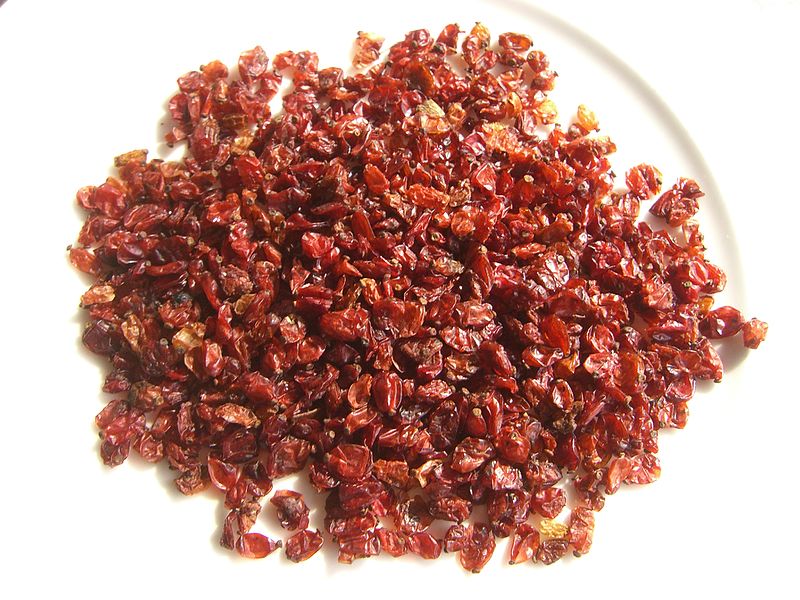Today’s blog post is taking us to the Near East, and here in particular to Iran, and focuses on a particularity of the cuisine there, namely the berries called zereshk (زرشک) or barberries, as they are known in English.
Zereshk are the dried fruit of the Berberis shrub (Berberis integerrima ‘Bidaneh’), which is widely cultivated in Iran and can reach a height of up to 4 m. The plant is mildly poisonous except for its berries and seeds. The berries are very sour and have a tart flavor, and taste a bit like cranberries. They are rich in vitamin C and are used both for cooking and jam-making. A traditional dish in Iran is زرشک پلو (zereshk polow) or barberry rice, a dish of rice (pilaf) with spices, e.g. saffron, and zereshk-berries mixed into it. Other zereshk products include juice and zereshk fruit rolls.
Iran is the largest producer of zereshk, and zereshk and saffron are often produced on the same land and the harvest is at the same time. A garden of zereshk-shrubs is called zereshkestan ( زرشکستان) . The South Khorasan province in Iran is the main area of zereshk, and also of saffron, production in the world, especially the area around Birjand and Qaen.
Even though the barberry shrub is native to Central and Southern Europe, barberries are no longer widely known or used in Europe since the Berberis vulgaris (European barberry) is an alternate host species of the wheat rust fungus (Puccinia graminis), a grass-infecting rust fungus that is a serious fungal disease of wheat and related grains. For this reason, cultivation of barberries is prohibited in many places, e.g. in parts of Canada and the Unites States.




